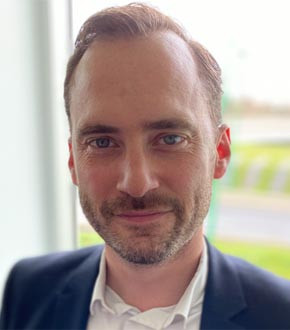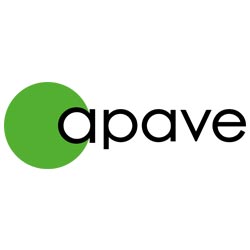Hello Nicolas. According to a simple definition, a site is polluted when a substance not present in its natural state is detected in its soil, resulting in an unacceptable risk for the targets to be protected and for a given use of the site. Where are we in France on this subject? Which pollutants are most present in our soils? What are the regulations and what are the issues?
In metropolitan France, the situation is heterogeneous and mainly the result of the country's industrial history. In this respect, some regions are historically more impacted than others, notably the north of France, the Rhône-Alpes region and the Ile-de-France. Under the aegis of the Ministry of Ecological Transition, an official database, Basol, collects and stores several thousand polluted or potentially polluted sites and soils requiring preventive or remedial action. This database currently lists 6,838 sites with proven pollution. Another database, Basias, lists 340,000 industrial sites, without prejudging whether each site is polluted. Inventories are not carried out everywhere in Europe, nor are they necessarily based on the same criteria. It is therefore difficult today to place France in the European context. In any case, we have the merit of having carried out these studies and we are observing regulations that are becoming stricter with time. As regards pollutants, we mainly find the families of hydrocarbons, chlorinated solvents, various mineral pollutants (metals), and more and more 'emerging' pollutants of the PFAS type.
Each study area is unique. Many questions must be answered: What industrial activities are listed? How were the sites exploited? For how long? In what geological context? Has the pollution impacted water resources (underground or in rivers) or sensitive natural sites?
An approach is made on a case-by-case basis, depending on the history of each site. We obviously rely on the national methodology for characterisation, and develop specific management solutions accordingly. In this area, we carry out research and development activities, integrated into the feasibility studies. The multiplicity of operations carried out and the solutions brought to bear enable us to have significant know-how from which we benefit on new projects. In addition to health, environmental and technical issues, there are also financial issues and cost optimisation issues which can sometimes represent hundreds or millions of euros, and on which the realisation of the project often depends.
Generally speaking, it is the future project on a site to be developed, typically a former industrial wasteland, that will guide the means and condition the nature of the actions to be carried out to rehabilitate a site, whether it is an industrial or residential project or a natural area. Our market should experience sustained growth in the future with the desire to stop the artificialisation of land in development projects (20,000 hectares of natural areas were artificialised each year between 2006 and 2016). The legislator and local authorities will henceforth favour the rehabilitation of former industrial wastelands. Among the most recent signals, logistics warehouse companies have committed to limiting the artificialisation of land as part of the signing of a charter between the government and e-commerce players last July.
To conclude this overview, I would add that there are many regulations to be complied with, such as the Environmental Code, the Civil Code (hidden defects), and the Labour Code with the obligation for company directors to protect their employees. It is precisely the complexity of the rules that makes the support of a third-party expert so valuable. The latter will have a global vision of the project in order to anticipate the risks as well as possible and imagine the right solutions. On this point, and for our clients, as is often the case, it is the anticipation and consideration of all the dimensions of a project that will make it successful.



Specifically, what role do you play on the subject and who are your clients (local authorities? companies?)? What are the steps to be taken to clean up a site and to comply with regulations? How far can we go?
We already have LNE certification and have more than 45 consultants specialising in polluted sites and soils (compared to 7 a dozen years ago) with work carried out both nationally and internationally, particularly in Africa. We thus have a solid team, broad multidisciplinary skills, long experience and know-how nurtured by all the projects carried out wherever our group is established. In line with our clients' expectations, we offer a global approach - regulatory and non-regulatory - in the framework of a highly structured and adaptable offer. As an engineering and design department, we provide advice on the development of rehabilitation solutions incorporating innovation and R&D, as well as on-site diagnostics (soil and ambient air sampling). This capacity to advise and provide operational support right up to the demonstration of effective rehabilitation makes the difference. With our legal partners, we also play our role as a technical and legal interface with elected officials, the administration, prefects and the DREAL. Once again, we are in a complex environment, there is a lot of case law, there is no room for improvisation...
Our business is growing rapidly and we are recruiting all over France.
Our clients are in the public and private sectors. We have very strong expertise with local authorities. For example, we work on the rehabilitation of industrial wasteland and the development of ZACs for the Metropolis of Lyon, the town hall of Bordeaux and the town hall of Nantes. We also work with a lot of industrial companies, from a nuclear site to a garage with an expansion project. We are also very present in the property development market, upstream of building permit applications and as part of a global service, from diagnostics to solutions, which is our strength.
On the market, and in the short term, we should mention the France Recovery Plan which subsidises the rehabilitation of sites for new development projects. We already support several local authorities in this type of project, such as the Bayonne CCI. In the medium and long term, the market should continue to grow, the stakes are there and the regulations should also be reinforced with notably the ASAP law which will structure the modalities of the cessation of activities of the companies. We will then have a public service delegation for the recording of the rehabilitation of ad hoc sites.
There is a lot of talk about data management to imagine solutions, can you tell us more?
It is undeniable that we are dealing with a subject that encourages innovation and R&D. The first project is ultimately that of knowledge. To carry it out successfully, all our employees in the field need to be efficiently equipped to collect information. This is why we are in the process of deploying tablets to our employees in order to industrialise data entry and collect all the data that enriches the databases. Today we collect billions of data. As the data is geolocalised, we can map projects, offer geostatistical analyses, compare projects and management solutions and capitalise on new projects. Today, data processing is essential on the scale of a territory, of a community, and we can assist them in these matters to map, parcel by parcel, the environmental state of a given territory. This is an additional layer that can be integrated into the Geographic Information Systems (GIS) that local authorities will use. All this knowledge makes us more 'intelligent' today in finding the best solutions both for the environment and for optimising the costs of a project or rehabilitation. For example, as part of an assignment for the Saint-Etienne urban area for the construction of the tram, we worked on the screening of polluted soil, for recomposition and reuse of unpolluted soil. The result is an environmental success and very significant savings for the community. The treatment of polluted soil represents a significant cost. On the solution side, Apave is the project manager and can coordinate various partners, in particular local companies that know the terrain particularly well. This ability to work with other players and to coordinate a project is only possible because we have the global approach I mentioned earlier.

Polluted sites and soil services
Environmental sampling service
Soil pollution" service: study, assistance and control
Discover our video on soil decontamination and thermal desorption
On the same
Topic
